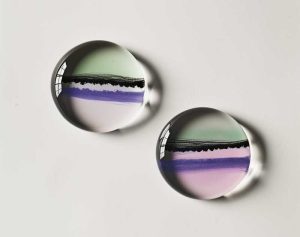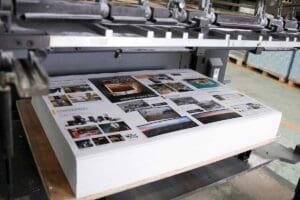In an era where sustainability is a critical corporate imperative, businesses across industries are increasingly turning to poly replacements in their packaging strategies.
This shift is driven by a confluence of factors including the urgent need to reduce plastic waste, stringent government regulations, evolving consumer preferences for eco-friendly products, and advances in alternative materials technology.
By adopting biodegradable, recyclable, and plant-based packaging options, corporations are not only mitigating their environmental impact, but also positioning themselves as leaders in the green economy.
Technological Advancements:
- Innovative Materials: The development of new materials, plant-based plastics, offers viable and sometimes superior alternatives to traditional plastics in terms of functionality and environmental impact.
- Improved Performance: Many poly replacements now offer comparable or even superior performance characteristics, such as durability, flexibility, and protection, making them practical for a wide range of packaging needs.
Economic Factors:
- Cost Efficiency: Advances in technology have made many poly alternatives more cost-effective. Biodegradable materials and innovative packaging solutions can sometimes be produced at a lower cost, especially when considering long-term waste management and recycling expenses.
- Resource Management: Poly replacements often use renewable resources, reducing dependence on petroleum-based plastics, which are subject to price volatility and supply chain disruptions.
Sustainability:
- Reduced Plastic Waste: Traditional plastic packaging contributes significantly to global plastic waste, much of which ends up in landfills or oceans. Poly replacements, often made from biodegradable or recyclable materials, help reduce this environmental burden.
- Lower Carbon Footprint: Many poly alternatives, such as plant-based plastics or paper-based materials, have a smaller carbon footprint during production and decomposition, aligning with corporate sustainability goals and reducing overall greenhouse gas emissions.
Regulatory Compliance:
- Government Regulations: Increasingly stringent regulations on single-use plastics and non-recyclable materials push companies to seek alternative packaging solutions. Many regions have introduced bans or taxes on certain types of plastic packaging, making poly replacements a necessary compliance measure.
- International Standards: Adopting poly replacements can help corporations meet international environmental standards and certifications, which can be crucial for global market access and competitiveness.
Consumer Demand:
- Eco-conscious Consumers: There is a growing consumer demand for sustainable and eco-friendly products. Companies adopting poly replacements can appeal to this demographic, enhancing brand loyalty and potentially commanding higher prices for green products.
- Brand Image: Using sustainable packaging can improve a company’s brand image and reputation, showcasing a commitment to environmental responsibility, which can be a significant differentiator in competitive markets.
Overall, the shift towards poly replacements in packaging is driven by a combination of sustainability goals, regulatory pressures, economic benefits, consumer preferences, and technological innovations. This multi-faceted approach helps corporations not only reduce their environmental footprint but also stay competitive and aligned with evolving market trends and regulatory landscapes.
“�鶹��ý���� from its inception, has developed and offered a wide range of aqueous coatings. A grouping of FDA compliant barrier coatings suitable for coating paper and paperboard substrates for liquid and dry food conveyance are among these. Contact us for more information.”
REPLACING POLY (PE) COATED PAPER & PAPERBOARD
Want an alternative to poly board? The answer is simple, FDA direct food compliant water-based (aqueous) coatings, supplied by �鶹��ý���� are providing an alternative to PE coated paper and paperboard. Aqueous coatings are formulated across a broad spectrum of desired properties that are often packaged product specific.
For example, �鶹��ý���� aqueous coatings are commonly used for fast food carry-out packaging, (i.e., such products as French fries, onion rings, burgers, various sandwiches, fried chicken, and Chinese foods.) Other food products such as bakery, pastries, frozen foods, microwavable and oven able foods, and roasted chicken are routinely packaged. Differing food products might require water, and/or grease/oil resistance, a low MVTR, odor and taste protection, temperature or chemical resistance, anti-wicking, product release, with good scuff resistance, and appropriate COF properties.
�鶹��ý���� aqueous coatings that offer these properties, plus gluability, and heat seal ability are replacing PE coatings. Other aqueous coated paper board products are being formed into paper plates, trays, and cartons. Foremost, aqueous coated paper and paper board is, sustainable, biodegradable, compostable, recyclable, and repulpable (without hydro-pulping).
�鶹��ý���� aqueous coatings can be applied off-line or in-line, giving control to the printer to create a substrate designed to satisfy an individual customer’s requirements. Additionally, these �鶹��ý���� coatings DO NOT fall under the new EU single-use Plastic Directive (SUPD dated July 3, 2019, the implementation of which has slowed in most European countries.
WHAT ARE THE PROBLEMS WITH POLY BOARD?
One of the world’s most pressing environmental issues is said to be plastics pollution, as volumes of disposable plastics have surged to become overwhelming. Very little of disposed plastics get recycled and consequently, they are littering our landscape, waterways and oceans, compromising the health of humans and animals. Plastics don’t easily decompose and if burned release toxic gases. These problems have led to consumer, political and legislative pressure to reduce fossil fuel-based plastic use.
Coated paper and paperboard (poly board), containing about 20 mass percent of PE, is one of the most widely used materials for food and beverage packaging ranging from milk cartons and soup packets to fast food boxes and cups. The portion that ends up in landfills finds the paper component degrading rapidly while the Petro-chemical-based PE coating takes decades to break down.
An American Forest & Paper Assoc. survey shows that a high percentage of U.S. communities have access to paperboard recycling. A stipulation is that the refuse must be clean in and out (a chore and water-wasting process). When recycled, Poly board sees a “hydro-pulping” process to separate paper fiber from PE after which the pulp is recycled.
Poly coated board is a substrate consisting of rigid paperboard that is extrusion coated with a layer of PE to provide improved barrier properties. This single surface PE coated board is widely used as external cartons for many foods with a short shelf life, and over a wide temperature range (frozen to ambient). Two side PE coated paper board is extensively used to package liquid products, high-moisture and fatty food products. PE is easily heat sealed for package closure.
Polyethylene (PE), a polyolefin, is a thermoplastic, organic polymer, consisting of long hydrocarbon chains. The light versatile synthetic resin is produced by the polymerization of ethylene. Ethylene, a gaseous hydrocarbon, is commonly produced by the cracking of ethane, which is a component of natural gas, or it can be distilled from petroleum. Most grades have excellent chemical resistance and are resistant to gentle oxidizing and reducing agents.
Today’s Solutions for Poly Replacement
Currently, due to polyethylene’s negative environmental aspects, and the movement to reduce or eliminate fossil fuel use, science continues to search hard for alternatives. There is still no material with all of plastic’s great advantages and none of its devastating disadvantages, even after extensive exploratory/development efforts seeking viable solutions.
Some of this effort is seeking to exploit bio-plastic technology. While it has been predicted that the use of bio-plastics will grow rapidly, it isn’t generally realized that plastics made from renewable plant resources won’t readily solve the problem of plastic debris. This is because more than 50% of current bio-based plastics are not biodegradable and require recycling. Hence the same problems as with PE. A more environmentally friendly bio-plastic will require it to be both bio-based and biodegradable.
Then again, some bio-plastics will be biodegradable only when composted with decomposing high temperature and humidity conditions. One European effort to go Green and improve recyclability has seen the successful commercialization of replacing Petro-chemical sourced PE with Green bio-sourced material, however, the result is still poly board.
Many other concepts are being explored with the goal of replacing PE and PE coated paper and paperboard. It remains however, for many paper and paperboard product applications, that aqueous barrier-coatings offer a smart alternative to poly board.
�鶹��ý���� from its inception, has developed and offered a wide range of aqueous coatings. A grouping of FDA compliant barrier coatings suitable for coating paper and paperboard substrates for liquid and dry food conveyance are among these. Contact us for more information.
Contact �鶹��ý���� Technical experts if you require an aqueous coating with enhanced performance properties for a demanding application. �鶹��ý����s’ business is the development and formulation of Aqueous, energy curing Ultraviolet (UV), and Electron Beam (EB) specialty coatings and adhesives.









